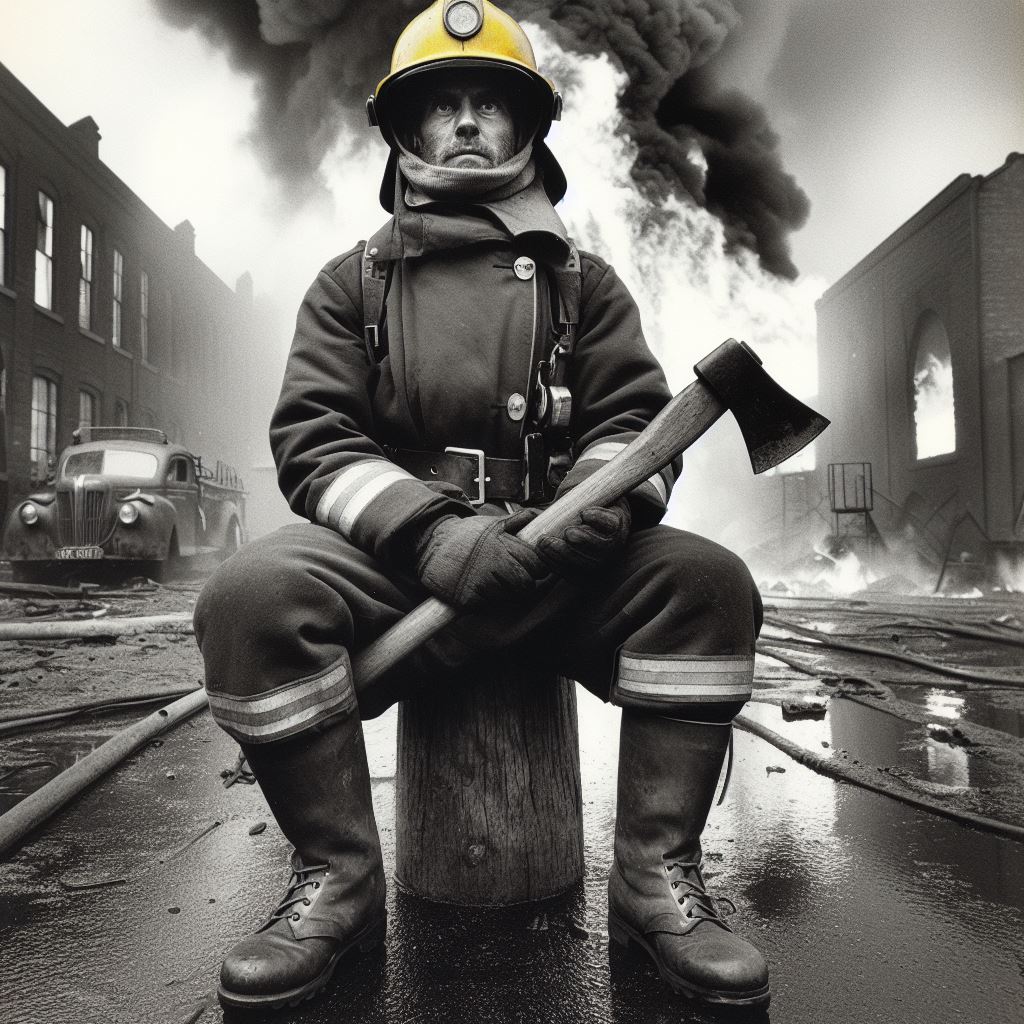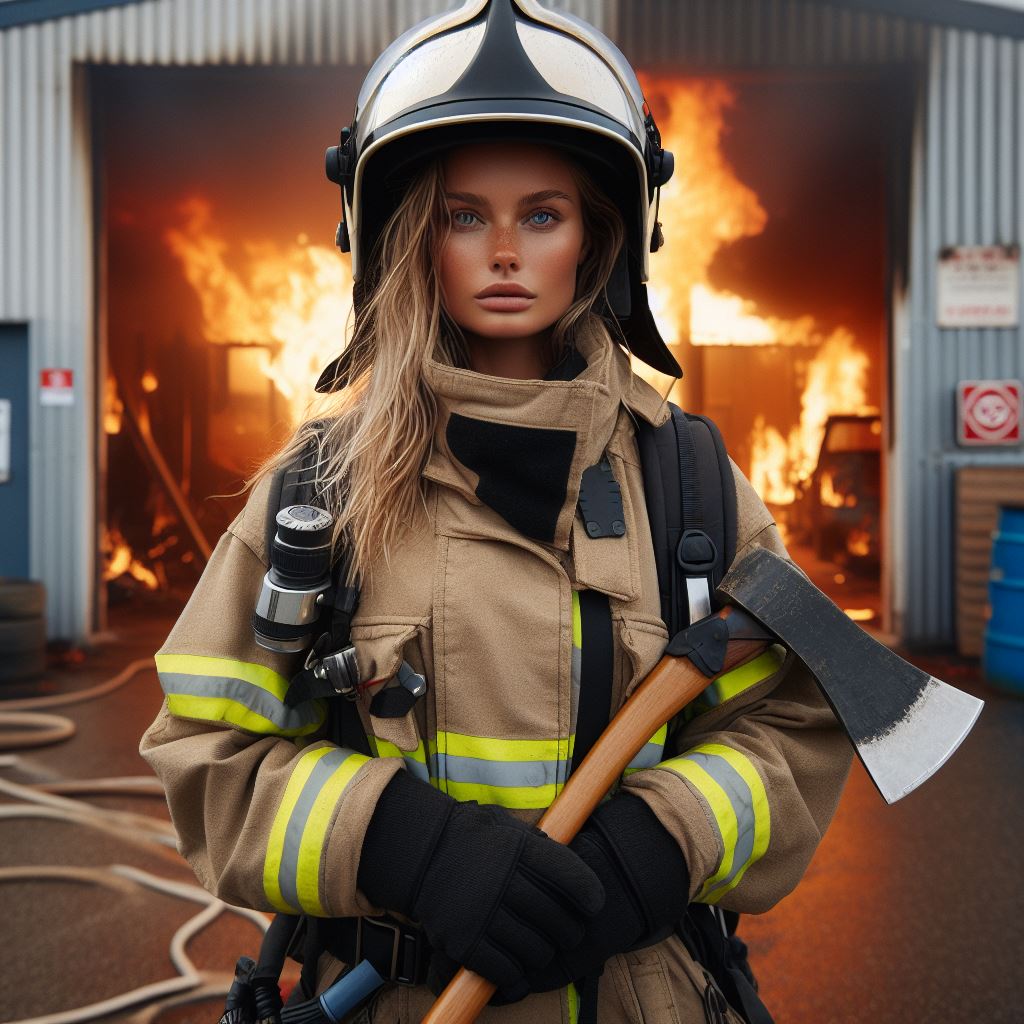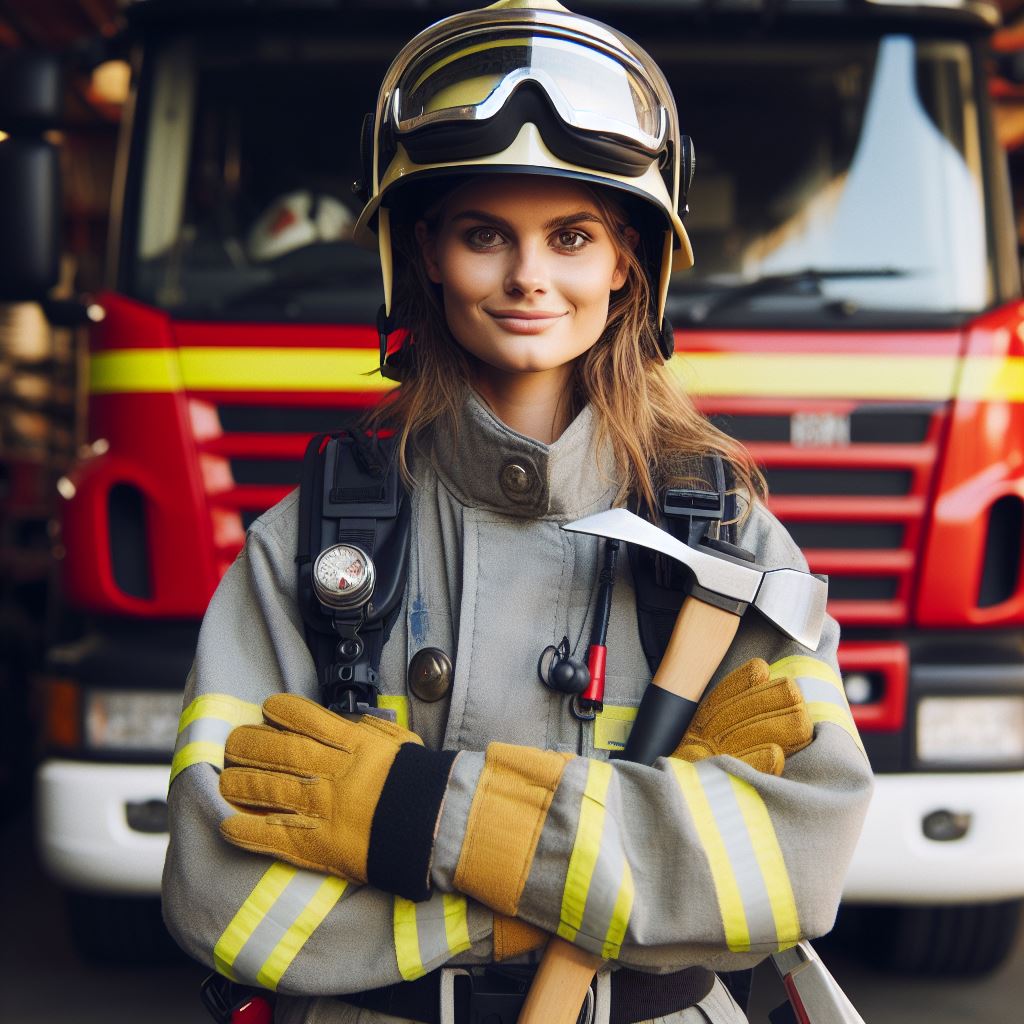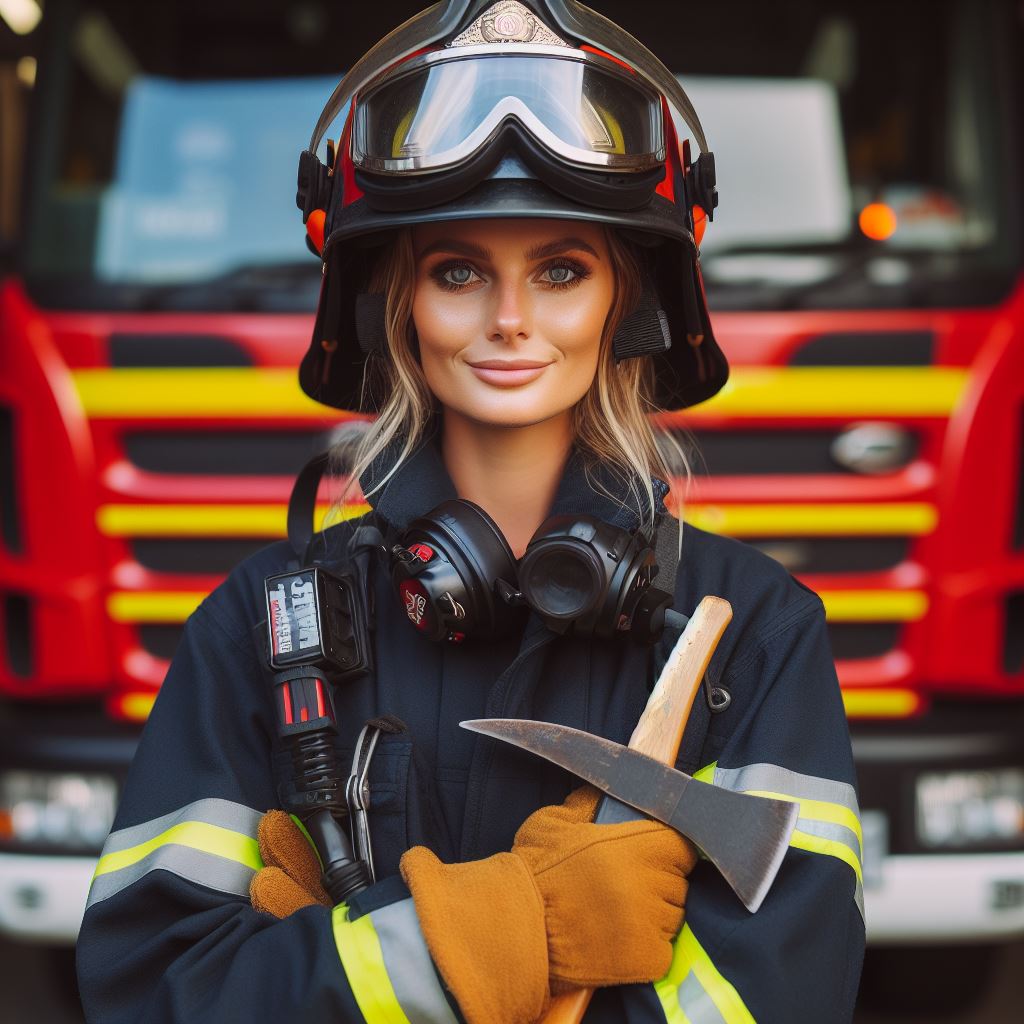Introduction
Australia is known for its devastating wildfires, with the country experiencing some of the largest and most destructive fires in history.
Understanding how firefighters respond to these wildfires is crucial in mitigating the damage and protecting lives and property.
Australia is prone to wildfires due to its dry and arid climate, coupled with vast areas of flammable vegetation. These fires are often exacerbated by strong winds, making them difficult to contain and control.
The country has a long history of dealing with wildfires, with some regions experiencing regular fire seasons.
Knowing how firefighters respond to wildfires is essential for effective fire management and prevention strategies.
Firefighters are trained to assess the fire’s behavior, develop strategies, and make quick decisions to protect communities and resources.
Their tactical response can significantly impact the outcome and minimize the devastating effects of wildfires.
By understanding their techniques, equipment, and protocols, we can appreciate the challenges and risks faced by firefighters and support their efforts effectively.
This knowledge enables us to prepare communities better, educate the public on fire safety, and advocate for necessary resources and support for firefighters.
In review, wildfires in Australia pose significant threats to both human lives and the environment. Understanding how firefighters respond to these disasters is essential in minimizing damage and protecting communities.
By appreciating their efforts, we can support their crucial work and work towards a safer and more resilient future.
Overview of Australian wildfires
Australia experiences frequent and severe wildfires due to its hot and dry climate. The country has a long history of wildfires, with a significant number occurring every year.
Frequency and severity of wildfires in Australia
The frequency of wildfires in Australia has been increasing over the years. Climate change, combined with drought conditions, has escalated the severity and extent of these fires.
Impact on the environment, wildlife, and communities
- Australian wildfires have a devastating impact on the environment, causing deforestation and loss of biodiversity.
- The loss of habitats leaves many species vulnerable, leading to a decline in wildlife populations.
- These fires also pose a threat to human lives, properties, and infrastructure, particularly in rural areas.
Firefighters play a crucial role in responding to these wildfires
- Firefighters in Australia are highly trained and equipped to combat the challenging conditions of wildfires.
- They employ various strategies, such as controlled burning and firebreaks, to prevent fires from spreading.
- Firefighters work tirelessly to protect communities and minimize the destruction caused by wildfires.
Tools and equipment used by firefighters
- Firefighters use a range of specialized tools, including fire trucks, hoses, water pumps, and firefighting aircraft.
- They wear protective clothing and equipment, such as fire-resistant suits, helmets, and breathing apparatus, to ensure their safety.
Coordination and collaboration among firefighting agencies
- Firefighting efforts in Australia involve numerous agencies, including state fire services, rural fire services, and volunteer organizations.
- These agencies work closely together, sharing resources and information, to effectively respond to wildfires.
Challenges faced by firefighters
- Firefighters encounter several challenges while battling wildfires, including extreme heat, strong winds, and rugged terrain.
- The unpredictable nature of fires makes firefighting operations dangerous and complex.
The importance of public awareness and preparedness
- Public education and awareness campaigns are essential to ensure individuals understand the risks of wildfires and how to prevent them.
- Preparedness measures, such as creating fire-safe zones around properties and developing evacuation plans, can save lives and minimize damage.
Efforts towards wildfire prevention and mitigation
- Australia invests in research and technology to improve early warning systems and develop more effective firefighting techniques.
- The government also focuses on land management practices, such as controlled burning, to reduce fuel loads and lower the risk of wildfires.
Australian wildfires are a recurring threat, causing significant damage to the environment, wildlife, and communities.
Firefighters play a vital role in responding to these fires, using specialized tools and collaborating with multiple agencies.
Public awareness, preparedness, and ongoing efforts in prevention and mitigation are crucial in minimizing the impact of wildfires in Oz.
Read: Understanding Ranks in Australian Police Force
Role of firefighters in wildfire response
When wildfires rage through the Australian bush, firefighters play a crucial role in responding to these devastating disasters.
They are on the frontlines, confronting the flames and working tirelessly to protect lives, property, and wildlife.
Responsibilities of firefighters during wildfires
- Fire Suppression: Firefighters use various techniques, including water, foam, and retardants, to extinguish the flames and prevent the fire’s spread.
- Evacuation Assistance: They provide support and guidance to people affected by the wildfires, ensuring their safe evacuation.
- Rescue Operations: Firefighters conduct search and rescue missions, saving people trapped by the fire and providing medical aid when necessary.
- Containment Strategies: They create firebreaks and control lines to prevent the fire’s progress by removing vegetation to create a barrier.
- Communication and Coordination: Firefighters communicate with their team and other emergency services to ensure a well-coordinated response.
- Assessment and Planning: They constantly assess the situation, analyze fire behavior, and develop tactical plans to effectively combat the wildfire.
- Preventive Measures: Firefighters educate the public about fire safety, implement controlled burns, and enforce fire regulations to reduce the risk of future wildfires.
- Equipment Operation and Maintenance: They operate and maintain firefighting tools and equipment, such as fire trucks, hoses, and chainsaws, to ensure their effectiveness.
Challenges faced by firefighters in tackling Australian wildfires
- Extreme Weather Conditions: Violent winds, high temperatures, and low humidity intensify the wildfires, making them difficult to control.
- Geographical Obstacles: Australia’s vast and rugged landscape presents challenges in accessing and navigating fire-affected areas.
- Limited Resources: The sheer size and scale of Australian wildfires often stretch the capacity of firefighting resources, including personnel and equipment.
- Emotional and Physical Toll: Firefighters face immense physical exertion and emotional stress while battling wildfires for extended periods.
- Smoke Inhalation and Health Hazards: Prolonged exposure to smoke puts firefighters at risk of respiratory problems and other health complications.
- Wildlife Protection: Firefighters also work to save and protect vulnerable Australian wildlife, rescuing and treating injured animals.
- Long-Term Impacts: Even after the flames are extinguished, firefighters may still face challenges like post-fire recovery and ecosystem restoration.
Basically, firefighters have a crucial role in wildfire response in Australia. They take on immense responsibilities, facing numerous challenges in their efforts to combat these destructive forces of nature.
Despite the difficulties they encounter, these brave men and women continue to put their lives on the line to protect communities and safeguard the Australian landscape.
Read: How to Become a Police Officer in Australia
Your Personalized Career Strategy
Unlock your potential with tailored career consulting. Get clear, actionable steps designed for your success. Start now!
Get StartedTraining and preparation
In order to become a firefighter in Australia, individuals need to meet certain educational requirements.
Educational Requirements for Firefighters in Australia
- Minimum Educational Standards: A high school diploma is the baseline requirement, but many firefighters pursue higher education to enhance their knowledge base.
- Specialized Fire Science Courses: Many opt for courses in fire science, offering comprehensive insights into fire behavior, prevention, and mitigation strategies.
- Advanced Degrees for Leadership Roles: Those aspiring to leadership positions often pursue advanced degrees in emergency management or related fields.
Specialized Training for Dealing with Wildfires
- Wildland Firefighting Courses: Firefighters undergo specialized training tailored to the unique challenges of wildfires, focusing on strategies for containment and control.
- Understanding Fire Behavior: Training includes studying the behavior of wildfires, helping firefighters predict and respond to changing fire conditions.
- Aerial Firefighting Techniques: Some firefighters receive training in aerial firefighting, mastering the use of helicopters and aircraft to drop water or fire retardants.
Importance of Physical Fitness and Mental Resilience
- Endurance Challenges: Physical fitness is paramount, as firefighters often face grueling conditions, requiring strength and stamina to endure long hours on the front lines.
- Mental Health Support: Recognizing the toll firefighting can take, mental health resilience training is provided, equipping firefighters to cope with stress and trauma.
- Team Building and Camaraderie: Building a strong team dynamic fosters mutual support, enhancing mental resilience and the ability to work cohesively under pressure.
In the realm of Australian wildfires, firefighters are not just responders; they are highly trained individuals whose commitment to preparation, education, and specialized skills ensures they are well-equipped to face the relentless challenges posed by nature’s fiery fury.
Through their unwavering dedication, these heroes stand ready to protect lives, properties, and the very fabric of Australia’s diverse ecosystems.
Read: Day in the Life of an Aussie Police Officer

Tools and Tactics Used by Firefighters
Firefighting Equipment and Technology
- Firefighters utilize various tools and equipment to combat wildfires and minimize their impact.
- They wear protective gear, including helmets, fire-resistant clothing, gloves, and boots, to ensure safety.
- Tools like axes, shovels, and picks help create fire breaks and remove flammable materials.
- Portable pumps, hoses, and nozzles are used to deliver water and suppress flames on the frontline.
- Fire shelters provide temporary shelter in case firefighters are trapped by rapidly advancing flames.
- Detection technologies like thermal imaging cameras and drones assist in identifying fire hotspots and monitoring their spread.
- Communication devices, such as radios and satellite phones, enable coordinated efforts and real-time information sharing.
Strategies for Containing and Extinguishing Wildfires
- Firefighters employ both direct and indirect strategies to suppress wildfires effectively.
- Direct tactics involve directly attacking the fire’s edge and extinguishing flames using water or fire-retardant chemicals.
- Indirect tactics focus on creating strategic fire breaks or controlled burns to eliminate fuel and halt the fire’s advance.
- Backburning, a common technique, involves intentionally setting small fires to consume vegetation ahead of the main fire front.
- Firefighters also establish containment lines by removing vegetation, digging trenches, or using bulldozers.
- They constantly assess weather conditions, topography, and fuel availability to adjust their strategies accordingly.
- Controlled burns during cooler periods reduce vegetation density, minimizing the chances of a major wildfire outbreak.
Use of Aircraft and Water Bombing Techniques
- Firefighters often call upon the support of aircraft to combat wildfires from the skies.
- Water bombing aircraft, such as helicopters and fixed-wing planes, drop water or fire retardants directly on the flames.
- Helicopters equipped with water buckets or snorkels dip into nearby water sources before dropping it onto the fire.
- Air tankers discharge fire retardants, which coat vegetation and suppress the fire’s spread.
- Aircraft provide a rapid response, especially in hard-to-reach areas or when ground crews require additional support.
- They enhance the effectiveness of firefighting operations by attacking fires from multiple angles simultaneously.
- Aircraft deployment depends on factors like visibility, wind speed, and pilot availability, limiting their continuous use.
Firefighters play a crucial role in protecting lives, property, and the environment from devastating wildfires. Their choice of tools, technologies, and tactics allows for efficient and strategic response.
From wearing protective gear to employing firefighting equipment, they leave no stone unturned in their fight against wildfires.
By utilizing advanced technologies, such as thermal cameras and drones, they gain valuable situational awareness.
Their strategies, whether direct or indirect, aim to minimize the spread and impact of wildfires. The use of aircraft and water bombing techniques provides an aerial advantage in hard-to-access regions.
Together, these measures form a comprehensive approach to combating wildfires and safeguarding communities.
Wildfires may present a formidable challenge, but with the dedication and expertise of firefighters, we can mitigate their destructive effects.
Read: Crisis Management in Diplomacy
Collaboration and coordination
In the face of devastating wildfires, collaboration and coordination among different agencies are key factors that determine the success of firefighting efforts.
By working together, firefighters can pool their resources and expertise, enabling them to tackle the blaze more effectively.
Interagency cooperation in firefighting efforts
Interagency cooperation is essential in addressing wildfires. Fire departments, forestry services, and emergency management agencies come together to form a unified front.
Sharing information, resources, and decision-making ensures a coordinated response to the fire. This collaboration allows for a more efficient deployment of personnel and equipment to the affected areas.
Support from volunteers and community organizations
Firefighters also rely on the support of dedicated volunteers and community organizations in their response to wildfires.
These individuals and groups assist with various tasks, including providing supplies, setting up temporary shelters, and offering emotional support to affected residents.
Their contribution is invaluable in alleviating the strain on professional firefighters and ensuring a more comprehensive response to the wildfire.
Communication systems used by firefighters during emergencies
Communication systems are a lifeline for firefighters during emergencies. Radios, which operate on specific frequencies, allow firefighters to stay connected with each other and receive important updates.
Advanced satellite technology provides real-time information about the fire’s progression, helping firefighters make informed decisions about strategy and resource allocation.
In recent years, technological advancements have significantly improved communication systems utilized by firefighters.
For example, drones equipped with infrared cameras can provide an aerial view of the fire, helping teams on the ground assess its extent and identify areas of concern.
These developments enable firefighters to respond more efficiently and protect communities more effectively.
Moreover, the use of Geographic Information Systems (GIS) helps firefighters during response efforts.
Stand Out with a Resume That Gets Results
Your career is worth more than a generic template. Let us craft a resume and cover letter that showcase your unique strengths and help you secure that dream job.
Get HiredGIS allows the integration of various data sources, such as topography and weather conditions, to create comprehensive maps that aid in decision-making.
By visualizing the wildfire’s potential path and understanding its behavior, firefighters can allocate resources strategically and prioritize areas that need immediate attention.
The cooperation and coordination among agencies, support from volunteers, and the use of advanced communication systems are vital components in a successful response to wildfires in Australia.
By working together, sharing resources, and leveraging technology, firefighters can effectively combat the ever-increasing threat of wildfires and protect both lives and properties.
In essence, wildfires in Australia require a collective effort from multiple stakeholders. Collaboration and coordination among agencies, interagency cooperation, and the support of volunteers and community organizations are essential.
Communication systems, including radios and advanced technology like drones and GIS, play a crucial role in ensuring an effective response.
With these measures in place, firefighters can better protect communities and minimize the devastating impact of wildfires.
Uncover the Details: Challenges Faced by Diplomats Today
Uncover the Details: Key Skills Needed for Policy Analysts in AU
Discover More: A Guide to Public Sector Job Interviews
Safety Measures and Risk Management
Safety is a top priority for firefighters when combating wildfires in Oz. By implementing strict safety protocols, firefighters can minimize risks and ensure their well-being throughout the firefighting process.
Safety measures and risk management are crucial components of firefighting operations. These measures aim to protect firefighters and reduce the likelihood of accidents and injuries.
The following are some key aspects of safety protocols in firefighting:
Importance of Safety Protocols in Firefighting
Safety protocols provide guidelines and procedures that firefighters must follow during wildfire response operations.
Adhering to these protocols ensures a systematic and organized approach to firefighting, reducing the potential for accidents and chaos.
Personal Protective Equipment for Firefighters
Firefighters must be equipped with appropriate personal protective equipment (PPE) to safeguard themselves from the hazards of wildfires.
PPE includes fire-resistant clothing, helmets, goggles, gloves, and respiratory protection devices.
These items shield firefighters from extreme heat, flames, falling debris, and smoke inhalation.
Transform Your LinkedIn for Maximum Impact
Elevate your professional brand with a LinkedIn profile that attracts recruiters, showcases your expertise, and maximizes opportunities. Stand out in your industry with a profile built for success.
Boost ProfileHealth Risks Associated with Battling Wildfires
Battling wildfires exposes firefighters to various health risks due to hazardous conditions and environmental factors.
These risks include respiratory problems caused by smoke inhalation, heat-related illnesses, physical injuries, and mental health issues such as post-traumatic stress disorder (PTSD).
Risk Assessment and Planning
Before engaging in firefighting operations, firefighters conduct a thorough risk assessment of the wildfire situation. This assessment involves evaluating the fire’s behavior, weather conditions, terrain, and potential hazards.
Based on this assessment, an effective firefighting plan is developed, taking into account the safety of personnel and the strategies to combat the blaze.
Communication and Coordination
Effective communication among firefighters and other emergency responders is vital for ensuring safety during firefighting operations.
Firefighters use radios and other communication devices to maintain constant contact, exchange critical information, and alert others in case of emergencies or changes in the fire’s behavior.
Training and Education
Proper training and education are mandatory for all firefighters. They receive specialized training and participate in drills to enhance their skills, knowledge, and understanding of safety procedures.
Regular training sessions help firefighters stay updated on the latest techniques, technologies, and safety practices to effectively respond to wildfires.
Emergency Exit Strategies
Being prepared for emergency situations is essential in firefighting. Firefighters establish and communicate emergency exit strategies that allow them to quickly and safely evacuate if the situation deteriorates or poses an immediate threat to their lives.
These exit strategies are regularly reviewed and practiced during training sessions.
On-Site Medical Support
To address any potential health issues or injuries, medical support is often available on-site during firefighting operations.
These medical professionals provide immediate aid and treatment in case of injuries, heat-related illnesses, or other health emergencies.
Generally, safety measures and risk management are of paramount importance in firefighting operations.
By strictly adhering to safety protocols, utilizing appropriate personal protective equipment, and assessing risks comprehensively, firefighters can ensure their safety and effectively respond to wildfires in Oz.
Continued training, communication, and coordination also contribute to the overall safety and well-being of firefighters.
Their commitment and bravery in the face of danger are essential to protecting lives, property, and the environment.
Emotional and psychological impact on firefighters
Wildfires can have a significant emotional and psychological impact on firefighters due to the stressful and traumatic nature of their work.
Stress and trauma experienced by firefighters
- Firefighters often face extremely challenging and dangerous situations during wildfires.
- The constant exposure to high-stress environments can lead to increased levels of stress and anxiety.
- The adrenaline rush and intense workload can cause exhaustion, both physically and mentally.
- Witnessing destruction, loss of life, and devastation can result in post-traumatic stress disorder (PTSD).
- Fear, guilt, and survivor’s guilt may further impact the mental well-being of firefighters.
Mental health support and counseling services available
- Recognizing the importance of mental health support, many firefighting agencies provide counseling services.
- These services may include confidential and professional counseling sessions with qualified therapists or psychologists.
- Engaging in therapy allows firefighters to process trauma, manage stress, and improve their coping mechanisms.
- Peer support programs are often implemented to connect firefighters who have shared similar experiences.
- These programs foster a sense of belonging and understanding among firefighters, reducing feelings of isolation.
Impact on firefighters and their families
- The emotional toll of firefighting can extend beyond the fireground and affect firefighters’ personal relationships.
- The demanding nature of the job can strain familial bonds due to the long hours, physical fatigue, and substantial emotional stress.
- Families often worry about their loved ones’ safety and well-being, adding to their own psychological burden.
- It is essential for families to have access to support systems that provide education and resources for coping with the challenges they face.
Self-care and strategies for mental well-being
- Firefighters can prioritize self-care by taking breaks, maintaining a healthy lifestyle, and engaging in hobbies.
- Regular exercise, meditation, and relaxation techniques can help reduce stress and promote mental well-being.
- Building strong social connections within the firefighting community can provide a support network during challenging times.
- Open communication and seeking professional help when needed is crucial in maintaining good mental health.
- Ongoing training on stress management and psychological resilience should be provided to all firefighters.
The importance of addressing mental health in firefighting
- Recognizing and addressing the emotional and psychological impact of firefighting is crucial for the overall well-being of firefighters.
- Neglecting mental health can lead to increased burnout rates, absenteeism, and potential long-term consequences.
- Providing comprehensive mental health support ensures the resilience and effectiveness of firefighters in their essential roles.
- By prioritizing mental health, agencies can reduce stigma surrounding seeking help and create a culture that values well-being.
- Supporting firefighters’ mental health is not only beneficial for the individuals but also for the communities they serve.
Essentially, the emotional and psychological impact of wildfires on firefighters is significant. However, with accessible mental health support and counseling services, as well as a focus on self-care and strategies for well-being, firefighters can effectively cope with the stress and trauma they experience.
By prioritizing mental health, both individually and organizationally, we can ensure the resilience and continued dedication of our brave firefighters.
Conclusion
We cannot express enough gratitude and respect for the dedication and bravery shown by the firefighters who combat wildfires in Australia.
They put their lives on the line to protect our communities and ecosystems.
It is essential that we continue to offer ongoing support to firefighting agencies.
Adequate funding, resources, and training are crucial to ensure their effectiveness in future fire seasons.
We must also take personal responsibility and contribute to wildfire prevention efforts.
By being mindful of our actions and supporting initiatives such as controlled burns and fire breaks, we can help reduce the risk of devastating wildfires.
We can lend our support to firefighting efforts by donating to organizations that provide equipment, training, and resources to firefighters on the front lines.
It is only through collective effort and ongoing support that we can mitigate the impact of wildfires in Australia and protect our communities, wildlife, and natural environment.




